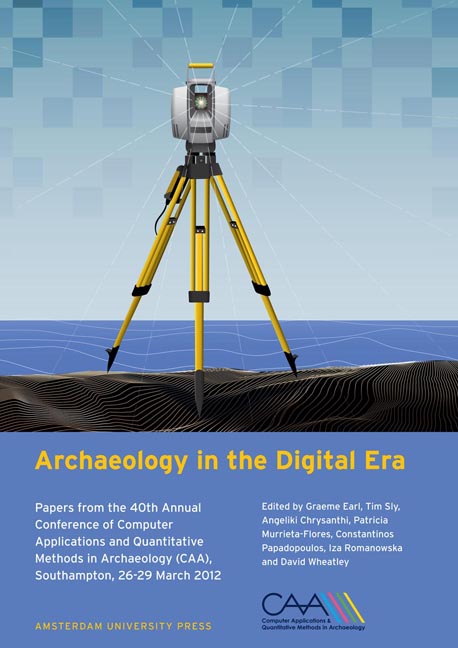 Archaeology in the Digital Era
Archaeology in the Digital Era The Long and Winding Road: Combining Least Cost Paths and Network Analysis Techniques for Settlement Location Analysis and Predictive Modelling
Published online by Cambridge University Press: 16 February 2021
Summary
Abstract:
In this paper, we describe an exploratory analysis of the possibilities of combining least cost path analysis and network analysis techniques. Accessibility is a potentially important site location factor. So far, the definition of accessibility has been approached through the creation of accumulated cost surfaces and least cost paths. However, these methods do not provide direct information on the foci of movement. Starting from networks created from least cost paths, network analysis and space syntax were used to obtain additional information on the structural features of the network. It is concluded that both techniques can be used with least cost path-based networks, and will provide new insights into the characteristics of the network. For most applications however the space syntax measures that take the geographical dimension into account seem to be preferable to the simple network analysis measures used here.
Keywords:
Network Analysis, Space Syntax, Least Cost Paths, Accessibility, Movement
Introduction
When thinking about socio-cultural factors influencing settlement location choice, the accessibility of places in the landscape is a potentially important variable to take into account. Among the possible factors determining settlement location, access to resources and ease of movement in the landscape may have been important elements. For example, settlements might be preferentially located in areas that offer good access to prime agricultural land, and that allow them to interact easily with neighbouring settlements. How to define accessibility in such a way that it might be used as a variable for site location analysis and predictive modelling is however still very much open to debate. Most published research considering landscape accessibility limits it to the ease with which humans can reach a certain location. So-called hiking equations are often used to obtain cost surfaces of accessibility, and accumulative cost surfaces are then applied to find the travel time or energy expenditure needed to reach a single destination from all points (pixels) in the area studied. By adding up these accumulated cost surfaces for each and every pixel, a map of differential accessibility of the landscape can be obtained (total path costs; Llobera 2000). This accessibility can also be analyzed for different travel times (short/medium/long distance; see also Mlekuz and Vermeulen in press).
However, these methods do not provide much information on the possible foci of movement in the landscape. We argue that to this purpose some additional steps are needed.
- Type
- Chapter
- Information
- Archaeology in the Digital EraPapers from the 40th Annual Conference of Computer Applications and Quantitative Methods in Archaeology (CAA), Southampton, 26-29 March 2012, pp. 357 - 366Publisher: Amsterdam University PressPrint publication year: 2014


